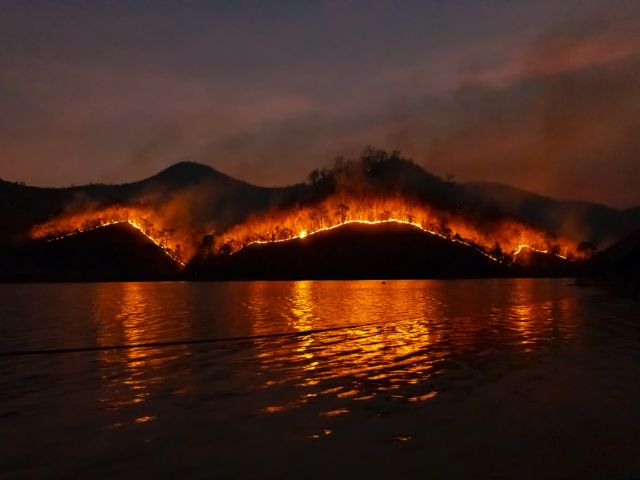
-
‘Hairdryer’ Winds: The Strange Weather Phenomenon Contributing To Worldwide Wildfires
21 Aug 2023 by Maya-Rose Torrao in Tech/Sci, World
[imagesource:pexels]
No, “hairdryer” winds are not the newest ASMR trend, but rather a serious meteorological happenstance that has been shown to be contributing to increasingly dangerous global wildfires.
These hot “hairdryer” winds, known as Föhn winds, have been implicated in some of this year’s devastating heatwaves and wildfires, including the massive blazes across Canada, Europe and Hawaii over the last couple of months.
The term “Föhn” also means “hairdryer” in German, and that’s exactly what these winds resemble: hot, dry blasts from a hairdryer. Perhaps the comparison to a personal haircare device is an extreme under-comparison, as these winds prove their ability to sweep down mountainsides at rapid speeds, significantly raising air temperatures of large areas.
Similar to what we Capetonians call a bergwind, these terrifying underrated gusts have been linked to the increase of erratic wildfires as well as the collapse of ice shelves.
The so-called Föhn effect is driven by moist wind rising up one side of a mountain, releasing energy into the atmosphere, which leads to higher air temperatures on the other side. This phenomenon can cause air temperatures to rise by several degrees or even more in certain conditions.
One of the most significant recordings of this taking place in real time occurred in Loma, Montana, where a hairdryer wind occurrence raised the local temperature from -48C to 9C in just 24 hours. That’s a whopping 57C increase. Ouch.
Experts predict that as climate change continues, longer and more frequent instances of the Föhn effect could lead to even more unprecedented heatwaves. Not that the world hasn’t had enough of said heatwaves over the last year alone. It’s gettin’ hot in here.
Arctic meteorologist at the US’s National Oceanic and Atmospheric Administration (NOAA), Jim Overland, has warned that blustery hazards like this are inextricable from climate change’s impact on the planet:
“Once you have global warming and you have the normal variability like Föhn winds contributing, it all acts together and gives you the heatwave you’ve never seen before.”
The rapid onset of Föhn winds can even melt snow and ice on mountain ranges, earning them the nickname “snow-eaters”.
And it’s not just our precious planet that’s suffering due to increasingly harmful weather conditions; there is ongoing research showing the potential psychological effects of Föhn winds on humans. Researchers have now found links between mental health hospitalisations and these hot, dry winds. A bergwind could be the thing that pushes you over the edge.
Given the risks associated with Föhn winds, being prepared for their occurrence is essential, especially in areas where there’s a danger of high temperatures or wildfires. Here’s looking at you, Hawaii Chief of Emergency, who decided to stand by the decision to not sound emergency sirens as Maui went up in flames. In these cases, preparedness can make a significant difference to loss of life statistics.
So now you know: hairdryer winds, bergwinds, Föhn winds… whatever you want to call them, they evidently need to be taken seriously.
[source:bbc]
Latest News
-
Thai Woman Sentenced To Death For Murdering 14 Friends With Cyanide In Shocking Killing Spree
[imagesource: Sararat Rangsiwuthaporn] A woman in Thailand, dubbed 'Am Cyanide' by Thai...
-
René Magritte Painting Sells For Record R2.1 Billion At Auction
[imagesource:renemagritte.org] A René Magritte painting portraying an eerily lighted s...
-
Brave Rape Survivor Alison Botha Faces New Challenge After Brain Surgery
[imagesource: Alison Botha] Gqeberha rape survivor Alison Botha, a beacon of resilience...
-
Get Ready For The Mother of All Celebrations As MCQP Turns 30
[imagesource:mcqp/facebook] Clutch your pearls for South Africa’s favourite LGBTQIA+ ce...
-
The Iconic Good Hope Centre Is Set For Redevelopment
[imagesource:capetown.gov] The City of Cape Town’s Mayoral Committee has approved the...
-






























